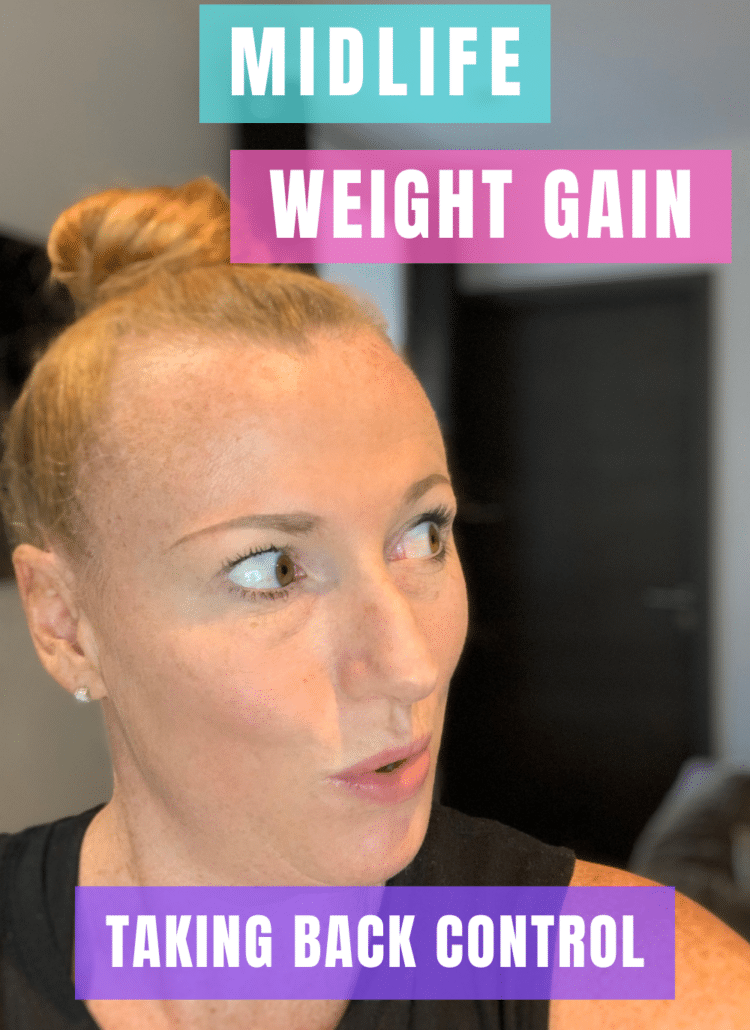If you’ve ever felt like your metabolism slammed on the brakes sometime after turning 40, you’re not alone. In this article we will be looking at how to speed up metabolism after 40, and how to do it naturally.
You’re eating “pretty well,” exercising fairly consistently, but yet the scale won’t budge, and your energy feels lower than ever.
Here’s the truth, your metabolism isn’t broken. Science shows that the metabolism doesn’t actually slow until after the age of 60, and even then it’s very small changes.
Truth is that life and how we feel changes, it’s just different now and the fact that things seem harder is not just in your head. Hormonal shifts, muscle loss, stress, sleep, and lifestyle all play a part, but with the right habits, you can absolutely fire it back up again.
And no, it doesn’t require cutting carbs, working out for hours every day, or taking expensive supplements.
Let’s dive into 15 realistic, science-backed steps to support a healthy, thriving metabolism after 4 and help you feel like yourself again.
1. Build (and keep) your muscle
Muscle is your body’s metabolic engine. The more you have, the more calories you burn even at rest.
ACTION STEP – Aim for 2–3 strength workouts per week, focusing on progressive overload. Prioritise compound moves like squats, deadlifts, rows, and presses.

Photo by Anastasia Shuraeva Pexels
2. Eat enough protein
Protein helps repair muscle and keeps you fuller for longer.
ACTION STEP – Aim for 1g of protein per lb of target bodyweight (or at least 30g per meal as a base and easier target). Think eggs, Greek yogurt, lean meats, chicken, fish, tofu, and protein shakes if you need a little top up. Always aim for a real food first approach.

3. Don’t skip meals
Undereating for too long slows down your metabolism and why I don’t recommend Intermittent Fasting for women.Though I know some people swear by it and for different people it can work BUT…..
Instead of cutting calories drastically, fuel your body consistently — especially with breakfast and focus on 3-4 solid meals per day keeping with that 30g of protein target.
4. Prioritise strength over endless cardio
Cardio is great for heart health, but too much steady-state cardio can actually increase muscle breakdown.
Stick with a balanced routine: 2–3 strength days + 1–2 cardio or conditioning sessions or one HIIT session
5. Move more throughout the day
You don’t need to “work out more,” you just need to move more often.
Walking, fidgeting, standing, housework, gardening — all these activities increase NEAT (non-exercise activity thermogenesis) and can make a huge difference over time. This is where your 7-10k steps target comes in. Use this goal as a target to work towards
6. Focus on sleep like it’s your job
Poor sleep = more cravings, slower metabolism, higher stress hormones.
Create a wind-down routine, avoid screens late at night, and aim for 7–8 hours of quality sleep most nights. Magnesium is also excellent for supporting good quality sleep.
Check out Simple Tips For Better Sleep for more sleep stratagies if this is an area you struggle with.
7. Lift heavier over time
If you’ve been lifting the same weights for months, it’s time to level up.
Metabolic change comes from progressive overload — gradually increasing weights, reps, or intensity. Having a program to follow can help make sure you are hitting that progressive overload. See HERE for my favourite apps and programs.
8. Eat more whole, unprocessed foods
Ultra-processed foods often lead to overeating without real nourishment. Like with anything the danger is in the dose. A little bit of anything is ok, but…
Choose foods that are as close to nature as possible as often as you can — think lean proteins, vegetables, fruit, whole grains, nuts, and seeds. Cooking food from scratch can take some time in getting used to but will be one of the best things you can do for your health.
9. Manage stress (for real)
Chronic stress raises cortisol, which can lead to fat storage around the midsection and make weight loss harder.
Try breathwork, walking outside, journaling, meditation or short mindfulness breaks, put your feet up the wall in the evening before going to bed. Even 5 minutes a day can make a difference.

Photo by Photo By: Kaboompics.com
10. Stay hydrated
Dehydration can slow down metabolism and make you feel sluggish.
Keep a water bottle nearby and aim for around 2 litres per day, more if you exercise or live in a hot climate.
11. Don’t fear carbs, just be smart with them
You don’t need to cut carbs; you just need to time and choose them wisely.
Opt for slow-release carbs like oats, sweet potato, or quinoa, and enjoy most of your carbs around workouts or earlier in the day.
12. Get enough fibre
Fibre supports gut health and helps regulate blood sugar — both vital for metabolism.
Aim for 25–30g of fibre daily, through fruit, veg, beans, lentils, and whole grains.
13. Be patient and consistent
Your metabolism didn’t slow overnight, and it won’t “reset” overnight either.
Small, consistent habits done daily always outperform quick fixes. Track progress beyond the scale — how you feel, how your clothes fit, and your energy levels.
14. Support your hormones naturally
As oestrogen and progesterone levels shift, metabolism can change.
Support hormone health through balanced nutrition, stress management, and quality sleep. Supplements like magnesium, omega-3s, and vitamin D can also help.
15. Stop believing you’re “too old” to change
This one’s big!!
Your metabolism isn’t doomed because you’re over 40. It’s simply waiting for you to give it the attention it deserves. With the right movement, mindset, and nourishment — you can absolutely feel strong, lean, and energised again.
Final thoughts
Improving your metabolism isn’t about punishment, restriction, or endless dieting.
It’s about re-teaching your body to trust you again — feeding it well, moving it often, and giving it the rest it needs. Yes rest is productive tooBecause when you focus on strength, nourishment, and self-care instead of deprivation, your metabolism follows your lead.



Leave a Reply